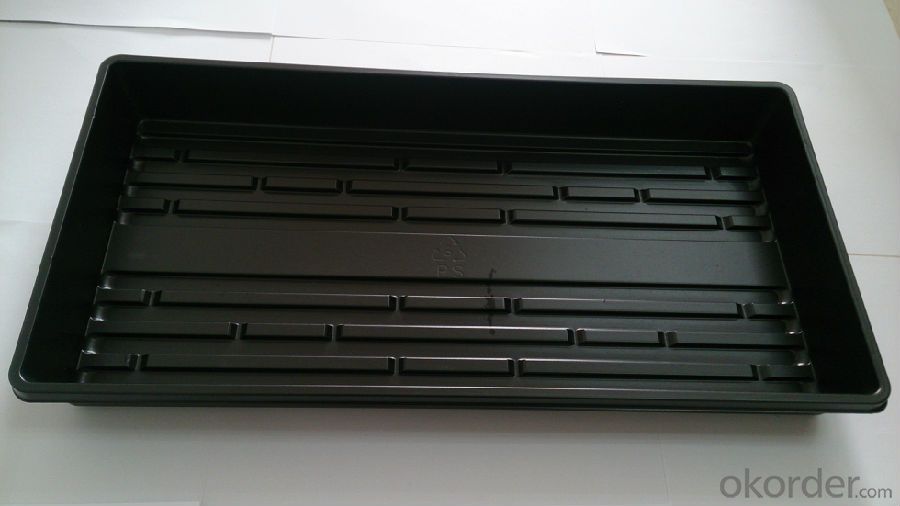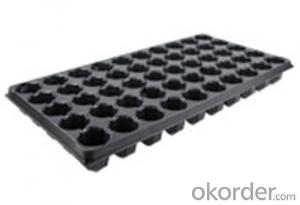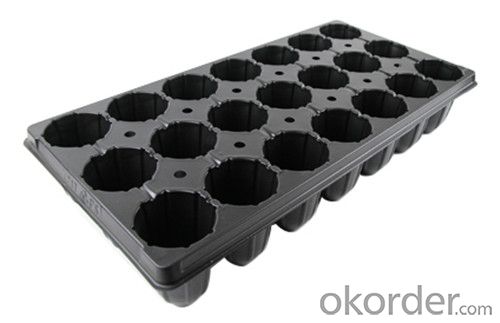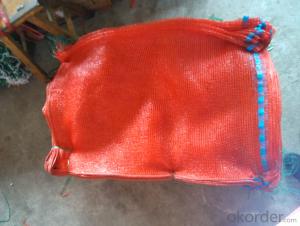Plastic Seed Tray Plug Tray for Green House PS
- Loading Port:
- China main port
- Payment Terms:
- TT OR LC
- Min Order Qty:
- 1000 pc
- Supply Capability:
- 10000 pc/month
OKorder Service Pledge
OKorder Financial Service
You Might Also Like
Structure of the seed tray:
Top quality and competitive price.
Variety design and good appearance.
Easy to use, and remove.
Durable and reusable.
Eco-Friendly.
Description Main Features of the seed tray:
Ideal for Starting seeds and Transplanting Seedling.
Suitable for both manual and automatic planting.
Suitable for Propagating Vegetables, Flowers and other plant from seed in green-house or indoors.
Seed Tray Images:



Seed Tray Specification:
Material: HIPS/PVC
Thickness: 0.5mm-1.5mm, Standard:1mm
Weight: 80g(±5)g-230g(±5)g, Standard weight:155g(±5)g
Size: length:490mm-540mm, width:190mm-345mm,depth:25mm-150mm
Standard:54mmX28mm
Cell count: 18-512
Package: carton
Using time: 8-10 times
FAQ:
Q:How Can I Get A Sample?
A:You can get samples by communicate with our export sales.
Q:How Long Is Delivery?
A:Delivery time will be 7-25 days according to order quantity.
Q:What Is The MOQ?
A:Our MOQ is 1*20FT container quantity, allow to mix several items.
Q:What Is Our Normal Payments Terms?
A:Our normal payment terms now is T/T, L/C or Western Union,Papal.
Q:How Do I Order Your Products?
A:You can check our website for any items you interest and you can also get communication with our export sales and order for it accordingly.
Q:What Kinds Of Material We Use In Our Product?
A:Our plastic flower pots use material such as PP polymer or PE polymer.
Thickness vs. Weight
Thickness of trays are from 0.5mm to 1.0mm.
1.0mm: 155g±5g; 100pcs/ctn.
0.9mm: 140g±5g; 120pcs/ctn.
0.7mm: 110g±5g; 150pcs/ctn.
0.6mm: 95g±5g; 180pcs/ctn.
0.5mm: 80g±5g; 200pcs/ctn.
Using time:
thickness of 0.5mm can be used 1 to 2 times.
thickness of 0.6mm can be used 3 to 4 times.
thickness of 0.7mm can be used 5 to 6 times.
thickness of 0.8mm can be used 7 to 8 times.
thickness of 0.9mm can be used 8 to 9 times.
thickness of 1.0mm can be used 8 to 10 times.
- Q: Where can I find a discount online for Plastic Bingo Chips - Red - 300 chips
- Plastic okorder Sales Rank: #1,581 in Toys Games Product Description 3/4 inch size. Approximately 300 plastic chips per reusable container. Radius edge. easy pickup. Commonly used at bingo and other games.
- Q: Can agricultural plastic products be used in aquaculture?
- Yes, agricultural plastic products can be used in aquaculture. These products, such as plastic mulch films and grow bags, can be repurposed for various applications in aquaculture systems. For example, plastic mulch films can be used as liners for fish tanks or ponds, providing a barrier between the water and the soil. Additionally, grow bags made from agricultural plastic can be utilized for cultivating aquatic plants or containing fish feed. Overall, by repurposing agricultural plastic products, aquaculture operations can benefit from cost-effective and versatile solutions.
- Q: Can nursery trays be used for tree seedlings?
- Yes, nursery trays can be used for tree seedlings. Nursery trays provide a convenient and efficient way to start and grow tree seedlings, allowing for easy transplanting and maintenance.
- Q: I know most of you will straight away think, quot;plastic bags! of course, duh!quot; well, yes, more of them are used than plastic bottles. but at least with plastic bags, you get a choice whether you want a plastic bag, a paper bag, a cloth bag or no bags at all right? but with plastic bottles, you only get the choice of plastic bottles. Lots of countries and cities have already banned plastic bags, but I don't see any headlines on the news about places like china banning plastic bottles, and China is basically the biggest place where plastic bottles are used!! so my arguement is, why aren't people banning plastic bottles too? what fills the landfill more and why don't we have a choice between plastic bottles?
- Plastics are worse for the environment for many reasons: First they are made of petroleum products. The drilling and production of petroleum products is very harmful to the environment. Also many areas will only recycle plastics with a 1 or 2 number on them. The plastics with a 3-7 will often times find themselves into the regular trash. depending on your recycling program, if you have plastics with a 3-7 in with the 1's and 2's your recyclers will just send the whole batch to the landfill rather than spend the time to separate them. Finally plastics use many toxic chemicals to produce and to recycle. Glass is 100% recyclable and does not use any toxic chemical to produce or recycle. I think there needs to be a move back to glass bottles. They are much more friendly to the environment and are not as dependent on fossil fuels to produce.
- Q: Can nursery trays be used for seed starting?
- Yes, nursery trays can be used for seed starting. Nursery trays are designed to provide a suitable environment for seed germination and early seedling growth. They typically have compartments or cells that allow for the individual sowing of seeds. These trays often come with drainage holes at the bottom to prevent waterlogging and promote healthy root development. Additionally, nursery trays can be easily transported and can be used with or without a greenhouse or grow lights, making them a convenient option for starting seeds.
- Q: I'm doing a report on plastic. I was wondering what parts of automobiles are made using plastic? I know some exteriors of cars are made using plastic or a variety of materials including plastic, but I'm not sure what type of plastic manufacturers use.Also, what about the interior? The dash must be made of some sort of plastic. Can anyone help me out here? Any information will help, thanks.
- Many engine parts are nowadays made with plastic. Intake manifolds, oil pans are just a couple. Radiators are too.
- Q: should plastic be banned?
- Is Plastic the name of a board game? If not, what is your question doing here?
- Q: Can agricultural plastic products be used for animal bedding?
- Yes, agricultural plastic products can be used for animal bedding. These products, such as plastic mulch, silage bags, or baling twine, can be repurposed as bedding material for animals. However, it is important to ensure that the plastic is clean and free from any harmful chemicals before using it as bedding.
- Q: Hello i want to make something from plastic, I will need something like a form for it, got a suggestion on how to make it and from what to make it? the dimensions of the thing will be like 20cm x 10cm x 3 cm it will actually be a blade for my floor ball stick. i will also need plastic for it so suggest me where to buy and which or which one could i re-use something like the plastic bottles. gt;D thanks in advance
- formed plastic is made from high heat and high pressure...the plastic is usually melted in a controlled way so it does not burn. Industry starts with uniform pellets which are then melted into a very thick medium. HIgh pressure air is usually used and is also warmed too to add to the molding effect. Molds are made out of Aluminum or steel alloys. They usually make a mold from solid aluminum, precisely grinding out the image into the aluminum, then one or more blow holes are added in both halves of the mold. THe mold is made into 2 pieces, halves, which will come apart easily too. THe temperatures that they deal with are between 500 and 1000 Fahrenheit, depending on the type of plastic....greater than that would cause burning. So if you have 5000 to 50000 laying around to invest into a blow molding machine then youcan do this. BUT...I would strongly suggest you forget about plastic and go with Fiberglas instead. Any marine or autobody shop or auto supply will have the materials. You'll also need an Organic filter mask, very good safety glasses, and thick plastic gloves or neoprene gloves. Make your mold out of wood and if for fiberglas then make the wood mold so that the fiberglas liquid does not escape., then pour the fiberglas mixture OR spread bondo over the wood around the mold. use the fiberglas strengthening tape or lath to reinforce the fiberglas or bondo. Then after 24 hours...remove the mold and carefully sand around it to smooth out the edges. Fiberglas or Bondo is much easier than plastic.
- Q: Are plastic water bottles cancergenic?
- The hoax email(s) claim to have come from Johns Hopkins University; as you see from the links this isn't true. You can also read a statement from Johns Hopkins on the issue.
Send your message to us
Plastic Seed Tray Plug Tray for Green House PS
- Loading Port:
- China main port
- Payment Terms:
- TT OR LC
- Min Order Qty:
- 1000 pc
- Supply Capability:
- 10000 pc/month
OKorder Service Pledge
OKorder Financial Service
Similar products
Hot products
Hot Searches
Related keywords





























